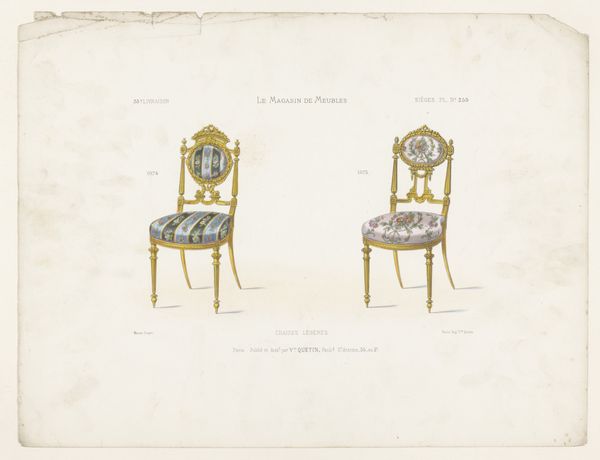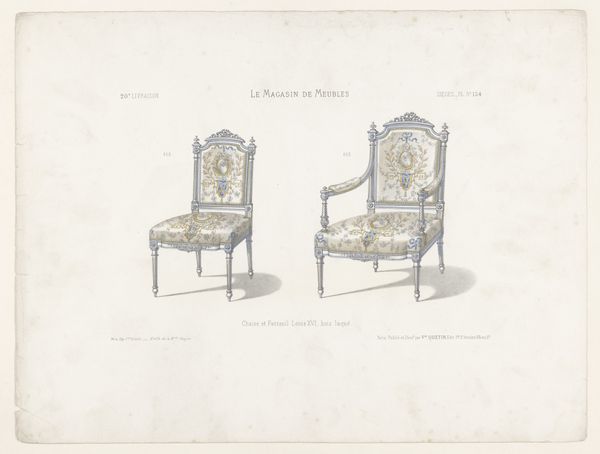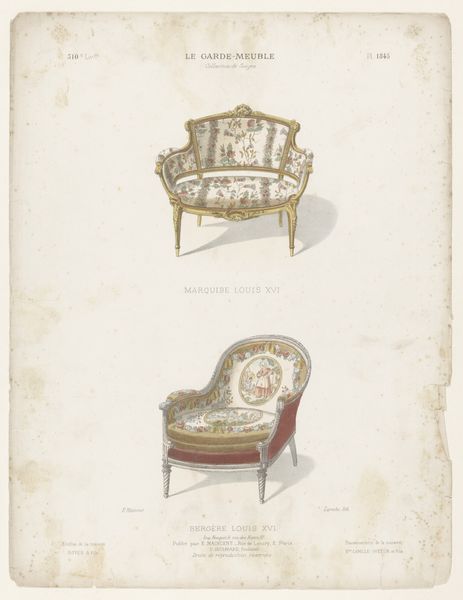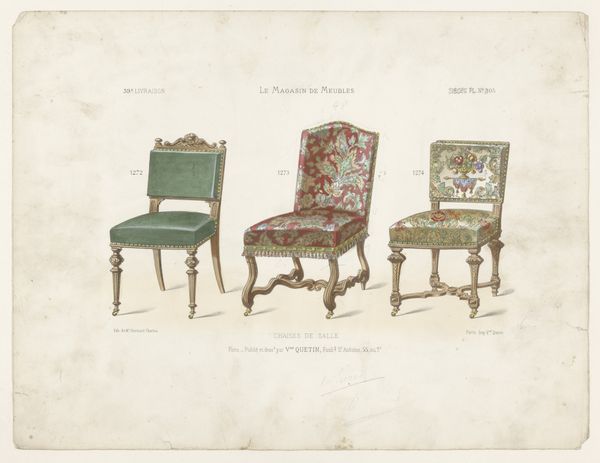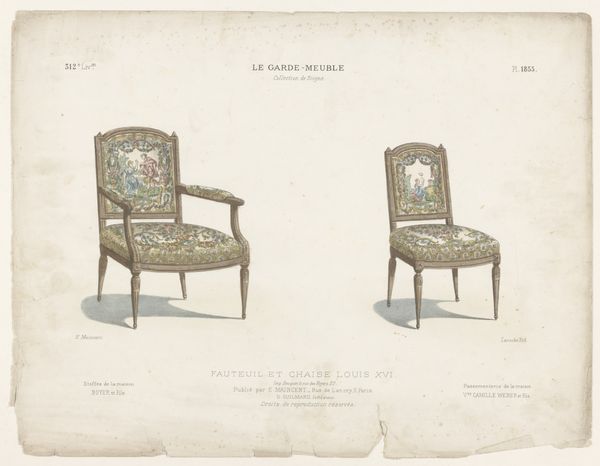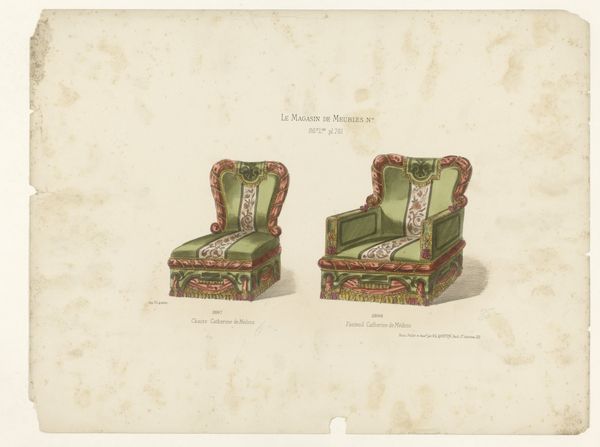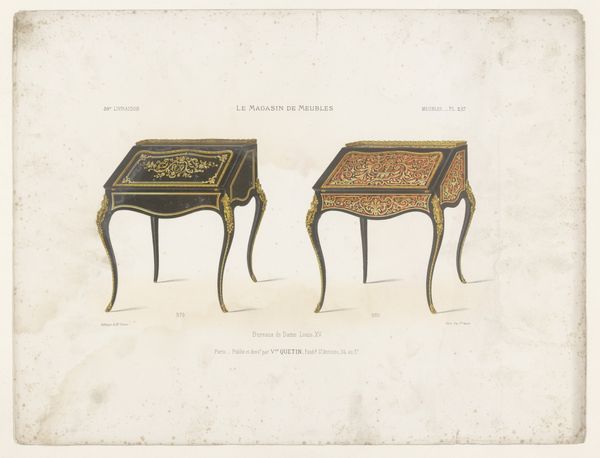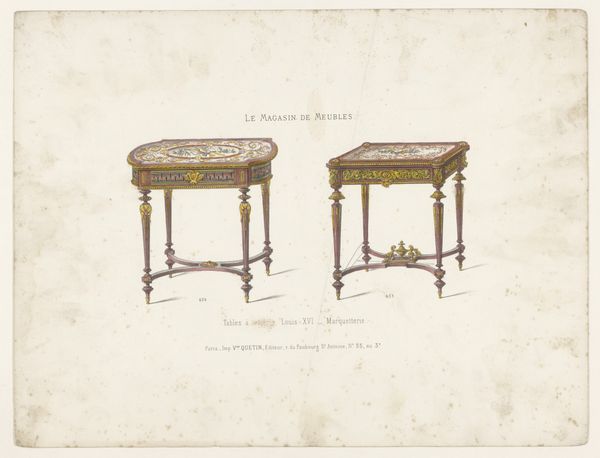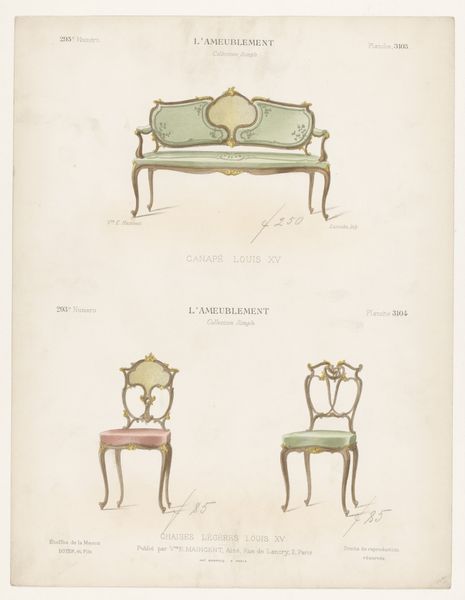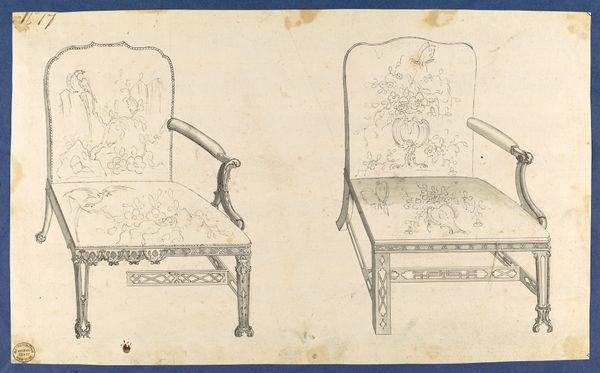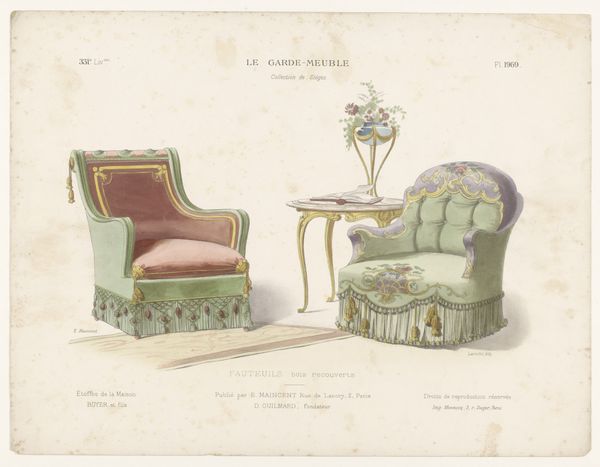
drawing, print, pen
#
drawing
#
neoclacissism
# print
#
pen
#
decorative-art
Dimensions: height 271 mm, width 358 mm
Copyright: Rijks Museum: Open Domain
Curator: Here we have “Stoel en fauteuil,” a print rendered in pen and ink. We estimate that it dates from somewhere between 1832 and 1877. Editor: They look…uncomfortable, though undeniably stylish. Stiff even in their rendering. Almost like a catalog entry rather than a study of functional objects. Curator: And indeed, I suspect that's precisely its function! Looking closer at the way the details have been delineated—the lines defining the woodworking, the subtle gradations suggesting texture in the upholstered elements—all imply careful, craft-driven production intended for potential consumers. Note also the symmetry and the use of the golden trim: this wasn't some rustic creation; it was furniture intended to grace fairly well-to-do homes, reflecting the tastes of the burgeoning middle classes. Editor: The symmetry you mentioned strikes me in another way. It's as though they were intended to represent not just furniture, but also specific social strata or perhaps idealized roles. A person's social role, and perhaps even gender. Look how one is designated the fauteuil with arms; one imagines it to be occupied by an elder or an important guest. This almost evokes a period stage play, emphasizing codified gestures in social settings! Curator: The regularity certainly does highlight the way the work may act more as an aspirational presentation piece. Perhaps intended to be perused by design professionals working to please wealthy patrons seeking to express their status. Editor: Right, so it’s the democratization of art through consumer goods. Furniture elevated to symbolic representations of class and power, rendered for the public's consumption. It speaks to a crucial juncture in social and artistic history when mass-produced items gained artistic merit by reflecting higher tastes and aspirations. Curator: Absolutely! And the attention to the details of production within the design also speak volumes for how we, today, examine and experience art beyond conventional classifications. Editor: That said, thinking of the chairs simply as reflections of aspiration underscores that a piece such as this can be perceived both for what it is but, more compellingly, for what it meant to those who interacted with the item in the 19th century. Aspirational living expressed via chairs!
Comments
No comments
Be the first to comment and join the conversation on the ultimate creative platform.
